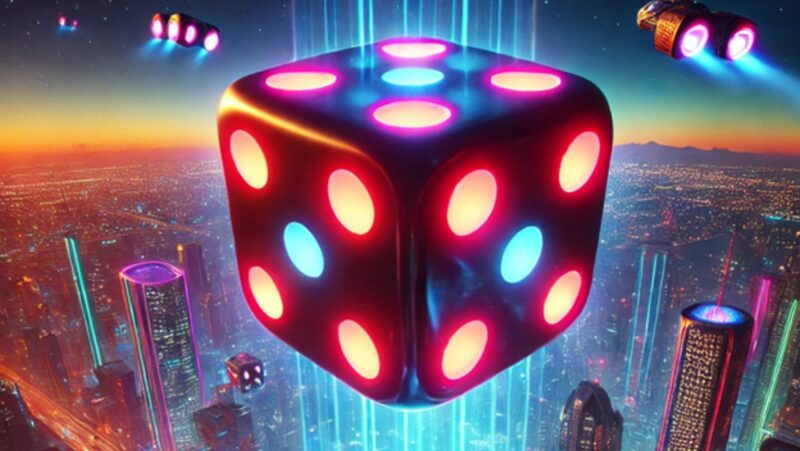Nightmare Alley (1947) – What’s different about the original adaptation?
The original adaptation of the 1947 film is noteworthy for its use of black-and-white cinematography and surreal, dreamlike tone. The 2017 remake has been praised for reviving a classic movie that was originally shot in color with a more visceral feel.
The “nightmare alley (1947 full movie)” is a horror-thriller film directed by Edward Dmytryk, released in 1947. The original adaptation is different from the remake because it was an independent production.
RETRO FILM – The original version, starring Tyrone Power, had to find a method to depict the terrible narrative of a con man’s career without disturbing the censors. In other respects, though, the 1947 picture is darker and more savage than the modern version.
Guillermo del Toro claimed he read William Lindsay Gresham’s 1946 book – the original source material for the film – before viewing the famous 1947 version starring Tyrone Power at the premiere of his new play Nightmare Alley earlier this month. But there’s little doubt that del Toro and Kim Morgan, who co-wrote the screenplay, were affected by the previous picture. The last phrase is copied verbatim from Jules Furthman’s original screenplay.
The life of Stan, an aspiring carnival worker who aspires to break out of his socioeconomic class, is followed in the 1947 version, just as it is in the current version. Stan (originally by Tyrone Power, now performed by Bradley Cooper) picks up a few tricks from Zeena and Pete, a down-and-out carnival couple whose once-greater goals have been reduced to a fairground routine. Stan eventually marries Molly, a coworker, and the two begin on a mentalist performance geared at Chicago’s upper crust.
A terrific classic directed by a filmmaker who isn’t very gifted.
Retro film buffs and noir film festivals have long favored the picture. However, defining its long-term attractiveness is difficult.
Certainly not because of the director, British-born Edmund Goulding (“Grand Hotel”), whom Andrew Sarris described as “unsympathetic”: “directors of varying aptitude, curiously preserved by their lack of pretense” in his landmark assessment of Hollywood filmmakers, American Cinema. Even Goulding’s greatest pictures, such as Nightmare Alley, were seldom regarded his own, according to Sarris, who also pointed out that Grand Hotel won Best Picture without a director’s nomination.
Goulding’s work has also been described as “discreet and tasteful” by Sarris, yet Nightmare Alley is far from that. Imogen Sara Smith, author of In Lonely Places: Film Noir Beyond the City, observes in an extra for the Criterion Channel that Goulding may have had an unexpected affection for the material. She claims she had a “scandalous reputation” in her personal life, claiming she “struggled with drinking and drugs” and “was said to have held wild bisexual orgies.”
The social class that is fated and “predestined”
“Nightmare Alley,” which was created under the Production Code’s constraints, could never have shown something so vile. However, it’s a dark and pessimistic picture that serves as a great artistic exercise for cinema noir, a genre that resists easy categorization. As has been said several times, noir is neither a genre, mood, nor a style. “Nightmare Nightmare” is neither a mystery nor a thriller in the traditional sense. However, it leaves you with a soul-crushing feeling that runs through your veins like methanol poisoning one of the characters. The feeling of doom, which is a key feature of noir, is pervasive.
In depicting socioeconomic class as an unavoidable, destined life, the original film is not subtle. Zeena and Pete (Joan Blondell and Ian Keith) have ‘been in a big-time’ but have returned to their ‘natural position,’ an unfulfilled life of roaming carnival employment, where Zeena performs a mind-reading show while the always-drunk Pete gives covert help. The “geek” who chews the heads off live chickens is one of the carnival’s greatest attractions – and a trick that amazes Stan. “I don’t see how someone can descend so low,” Stan says at the start of the movie, demonstrating both his self-assurance and his lack of context awareness.
This femme fatale is unflappable.
When Stan finally meets the femme fatale, Dr Lilith Ritter (Helen Walker, played by Cate Blanchett in the 2021 film), it’s significant that she’s a psychologist – not only because she knows what Stan wants, but also because she has money and status, giving her an important advantage over Stan as a con man. (Blanchett’s introduction is another aspect from Goulding’s film that del Toro uses instead of the book.)
While Zeena approaches Stan in the current picture, the 1947 adaptation had to be more intentional. The brief moment when Power kisses Blondell’s arm and he returns the kiss with a caress creates true sexual tension. However, sex seems to be of little interest to Stan in the 1947 version, much more so than in the novel or the current picture. “I don’t even bother to glance at the other person.” After their wedding, Molly (Coleen Gray) assures him, “Never.” Stan, on the other hand, isn’t even looking at her when she makes that vow. He glances out into the distance, his eyes glittering, and he thinks solely of the money they’ll create together, like Donald Duck with dollar notes in his eyes.
Chicago is basically a series of threatening shadows.
Although Lee Garmes’ cinematography lacks the hazy, deceptive views he created for Josef von Sternberg in Dishonored and The Shanghai Express, the packed, tarpaulin-filled carnival scene provided him with plenty of opportunities to surround the actors in frightening shadows. (Garmes’ visuals emit an especially silvery frost on the seldom exhibited, fiery nitrate films.) Chicago is nearly exclusively conveyed via set design, dialogue, and back projection, with the exception of two street views of a cab scenario. The performers’ location – Power smirking sarcastically and uncaring about the promise of a happy family life – implies Goulding knew what she was doing.
Self-deception and misconceptions
Nightmare Alley’s ongoing appeal may stem from its idea that we are all susceptible to illusion and self-deception — and may even choose to do so. The tale climaxes in both films when Stan, approaching the bottom of the downward spiral, realizes he has become a sucker.
Although del Toro’s updated version includes details from the novel that would not have passed censorship in 1947 and concludes the film in a more emphatic, concise manner (while leaving much else out – such as the first section of the film, or exaggerating it), the 1947 version is the genuinely definitive and also the more cruel, more vicious adaptation of the classic novel.
-BadSector-
RETRO FILM – The original version, starring Tyrone Power, had to find a method to depict the terrible narrative of a con man’s career without disturbing the censors. In other respects, though, the 1947 picture is darker and more savage than the modern version. Guillermo del Toro claimed he read William Lindsay Gresham’s 1946 book – the original source material for the film – before viewing the famous 1947 version starring Tyrone Power at the premiere of his new play Nightmare Alley earlier this month. But there’s no denying that the original picture had a big impact…
Nightmare Alley (1947) is a horror film that was released in 1947. What makes the original adaption unique?
Nightmare Alley (1947) is a horror film that was released in 1947. What makes the original adaption unique?
2022-02-04
Gergely Herpai (BadSector)
Nightmare Alley’s ongoing appeal may stem from its idea that we are all susceptible to illusion and self-deception – and may even choose to do so. The tale climaxes in both films when Stan, approaching the bottom of the downward spiral, realizes he has become a sucker. Although del Toro’s updated version includes details from the novel that would not have passed censorship in 1947 and concludes the film in a more emphatic, concise manner (while leaving much else out, such as the first section of the film, or exaggerating it), the 1947 version is the genuinely definitive and also the more cruel, more vicious adaptation of the classic novel.
8.2 Direction
Actors have an average rating of 8.4 out of ten.
8.2 for the story
7.8 Visuals (1947)
8.2 Ambience
8.2
EXCELLENT
Nightmare Alley’s ongoing appeal may stem from its idea that we are all susceptible to illusion and self-deception – and may even choose to do so. The tale climaxes in both films when Stan, approaching the bottom of the downward spiral, realizes he has become a sucker. Although del Toro’s updated version includes details from the novel that would not have passed censorship in 1947 and concludes the film in a more emphatic, concise manner (while leaving much else out, such as the first section of the film, or exaggerating it), the 1947 version is the genuinely definitive and also the more cruel, more vicious adaptation of the classic novel.
Be the first to leave a comment!
The “Nightmare Alley (1947) – What’s different about the original adaptation?” is a film that was released in 1947. The film was adapted from the novel of the same name by American author William Lindsay Gresham. There are many differences between the two, but some of them include different characters and a more serious tone. Reference: what is a geek in nightmare alley.
Frequently Asked Questions
What is Nightmare Alley a remake of?
A: Nightmare Alley is a remake of the 60s TV show called Nightmare.
Is Nightmare Alley a remake of an old movie?
A: No, Nightmare Alley is not a remake of an old movie.
Is Nightmare Alley A remake of the Tyrone Power movie?
A: Yes. It was produced by Hammer Film Productions in 1946 and starred Tyrone Power, which is the same film as Nightmare Alley released in 1947.
Related Tags
- nightmare alley’ explained
- nightmare alley (1947 cast)
- nightmare alley ending
- nightmare alley netflix
- nightmare alley rotten tomatoes









